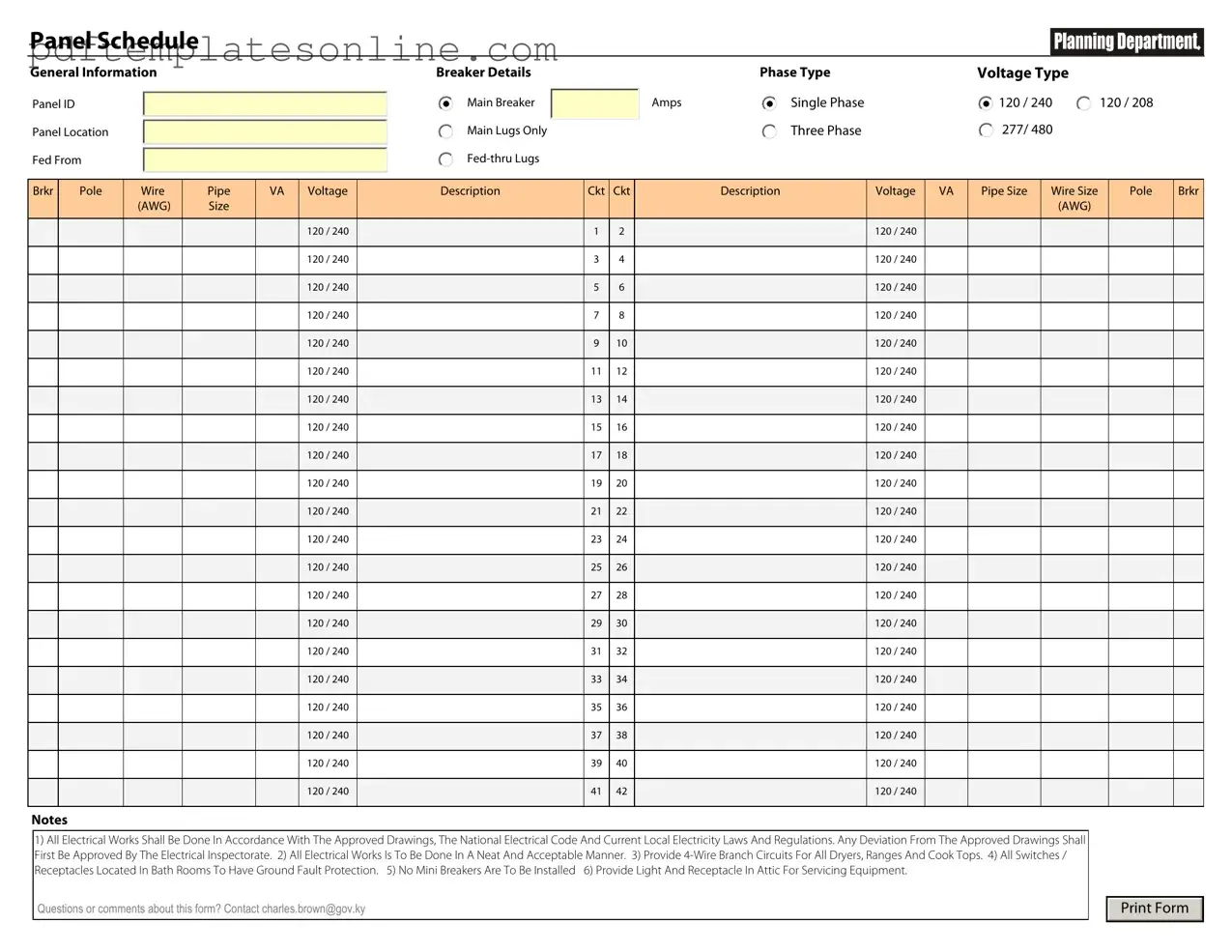Blank Electrical Panel Schedule Form
The Electrical Panel Schedule form is a crucial document that outlines the distribution of electrical circuits within a building's electrical panel. This form provides essential information about the load capacity, circuit breakers, and the specific devices connected to each circuit. Understanding this schedule is vital for ensuring safety and compliance with electrical codes.
Access Electrical Panel Schedule Editor Now
